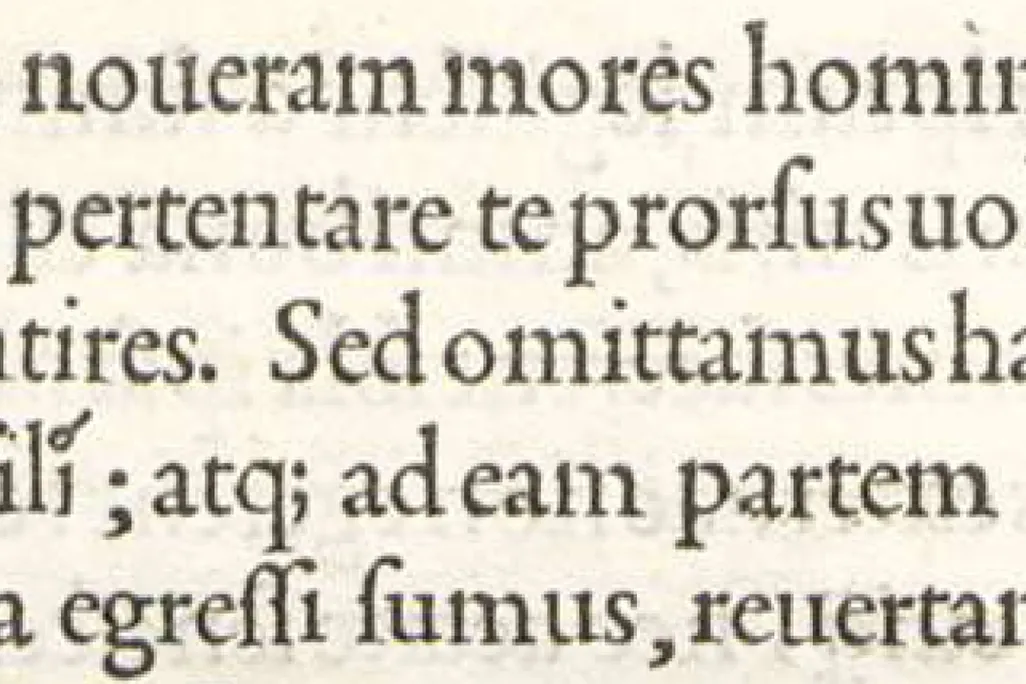Not only are semicolons evidently becoming more rare, but young people are less aware of how to use them, according to a survey
/https://tf-cmsv2-smithsonianmag-media.s3.amazonaws.com/accounts/headshot/Sara_-_Headshot_thumbnail.png)
Sara Hashemi - Daily Correspondent
June 17, 2025

The semicolon has long been a divisive punctuation mark. Since its first reported use published by the Italian printer and humanist Aldus Manutius the Elder in the 1490s, people have both sung its praises and argued for its demise.
Abraham Lincoln was one of the punctuation mark’s supporters: “I have a great respect for the semicolon; it’s a very useful little chap,” he wrote. The American novelist Kurt Vonnegut, on the other hand, was steadfast in his derision of the semicolon. “All they do is show you’ve been to college,” he wrote of them.
Now, it seems like those in Vonnegut’s camp may be winning the fight, according to the results of a recent analysis and survey commissioned by Babbel, a language learning software firm.
The work found that the use of the semicolon in English language books has long been declining, culminating in a dramatic drop in the last 20 years, according to a statement from the company. British literature in 1781 contained a semicolon about once every 90 words, but in 2000, the semicolon appeared once every 205 words. Today, the punctuation mark shows up just once every 390 words—a nearly 50 percent fall from the start of the century.
Sparked by this apparent decline, Babbel also asked University of Kansas grammarian Lisa McLendon to create a survey and multiple choice quiz about semicolon use to test the knowledge of some of the 500,000 young learners in the London Student Network. More than half of the respondents did not know how to correctly use the punctuation mark. Only 11 percent described themselves as “frequent users of the semicolon,” and the average score on the semicolon quiz was 49 percent.
Sofia Zambelli, a linguistic and cultural expert at Babbel, says in the statement that the punctuation mark “presents a challenge for many English learners.”
“Whilst searching for best use cases to illustrate the practicality and beauty of the semicolon, we found many historical texts but fewer contemporary examples,” she adds. “Our findings reveal that the semicolon is an ‘endangered’ punctuation mark, abandoned by many British writers who might have been expected to showcase its value and often misunderstood by younger generations.”
She also notes that the quiz suggests many students are not intentionally rejecting the semicolon; they’re just afraid of using it incorrectly.
The semicolon—written as a combination of a colon and a comma—is meant to connect two related ideas that could each stand alone as a sentence. It’s also used in complex lists to separate items that might contain commas already.
English writer Virginia Woolf used the semicolon profusely in her novel Mrs. Dalloway—more than 1,000 semicolons dot its 194 pages to reflect the protagonist’s stream of consciousness. In his “Letter from Birmingham Jail,” Martin Luther King, Jr., wrote a page-and-a-half long sentence extended by semicolons, describing the frustration of being told to wait for change while enduring the injustices of segregation. The semicolons keep “the reader in suspense, waiting, along with King, for justice,” wrote Mary Norris for the New Yorker in 2019.
Since the release of the recent survey results, some writers and academics have lamented the decline of the semicolon. In a piece for the Conversation, Roslyn Petelin, an associate professor of writing at the University of Queensland in Australia, defends the punctuation mark. “We cannot do without the semicolon,” she writes. “The Apostrophe Protection Society is going along very strongly. I would be more than happy to join a Semicolon Supporting Society.”
In an article for the Spectator, Philip Womack also defends the power of the semicolon. The writer and journalist notes its usefulness in both dividing and connecting statements. “We must resist this decline,” Womack writes. “Like napkins, black tie and having a glass of champagne before lunch, the semicolon remains a bulwark against civilizational decline.”
Get the latest stories in your inbox every weekday.
- More about:
- American Writers
- British Writers
- Language
- Writers
.png)




